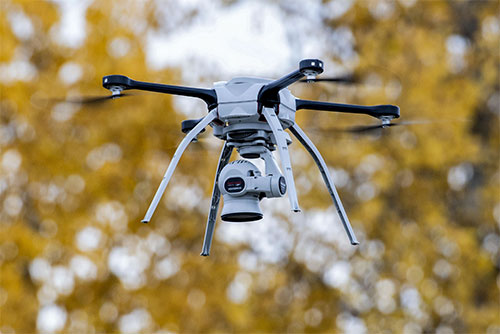Next-generation warfare: DARPA tests ‘drone swarms’ that will be operated by artificial intelligence, not human beings
In the 2019 film Angel Has Fallen starring Morgan Freeman as the U.S. leader and Gerard Butler as his trusted aid, the bad guys stage a rather unorthodox attack against the president and his Secret Service.

As the characters played by Freeman and Butler fish in the middle of a small lake one chilly morning, a large swarm of explosive-laden drones engulfs the area and begins taking out the security detail while attempting to target the president.
Like many Hollywood films that employ dazzling visual effects, the drone swarm isn’t so far-fetched after all.
We’ve all known that drones have been around for quite some time now. No doubt most of us have either seen one flying around our neighborhoods or have heard about drones being tested somewhere.
So it was only a matter of time before countries and governments began working on ways to weaponize drones.
Large drones like those developed first by the United States, capable of remaining on station for hours at a time and carrying large high-explosive missiles of the kind that was used recently to target Iranian Gen. Qassem Soleimani, are increasingly in use by militaries around the world.
And smaller drones of the type we see in our neighborhoods have also been used by militants in places like Syria to target enemy forces. So far, however, the technology to deploy swarms of drones in a coordinated effort to survey or attack targets is still in development.
But recently, DARPA – the Defense Advanced Research Projects Agency – tested a synchronous drone swarm program in Mississippi, and the results look worrying.
As reported by the UK’s Daily Mail, the program is called OFFSET, or “Offensive Swarm-Enabled Tactics.” The test incorporated a group of 250 autonomous air and ground vehicles that were sent into a simulated urban environment to provide researchers with “live information about sight lines, enemy positioning, environmental hazards, and general layout as part of a simulated military raid,” the paper reported online.
There’s also a ‘flying aircraft carrier’
The test, at DARPA’s Camp Shelby Joint Forces Training Center near Hattiesburg, Miss., involved tasking the drone swarm with finding a number of “AprilTags,” which is sort of like a QR code, that had been placed inside several buildings throughout the training facility designed to simulate city blocks.
The paper noted:
“The swarm of air and ground vehicles autonomously divided themselves into several different groups, each with their own tactical assignment.
Some were sent into buildings to locate the AprilTags, while others maintained strategic positions to watch for incoming threats.
Additional groups, meanwhile, were scanning and patrolling nearby terrain in order to provide researchers with a full 3D map of the area so that human operators could provide live tactical updates to the drone swarm.
As each of the drones operated separately, they sent back live footage that was monitored by human operators. Eventually, drones are likely to be operated using artificial intelligence, or AI.
In addition to monitoring the drones via a laptop, DARPA noted that the operators also used an augmented reality headset to respond and react to a live digital map of the surrounding area created by the drones as they flew surveillance over their environment.
The test – the third of six planned – was successful, the Pentagon research agency noted. The goal is to ensure that the software used by the drones, as well as the drones themselves, are reliable enough to deploy in real situations.”
The Pentagon is also developing another ‘drone swarm’ concept using X61A drones that are released from a C-130 aircraft, making it a sort of “flying aircraft carrier,” Popular Mechanics reports.
yogaesoteric
April 16, 2020
